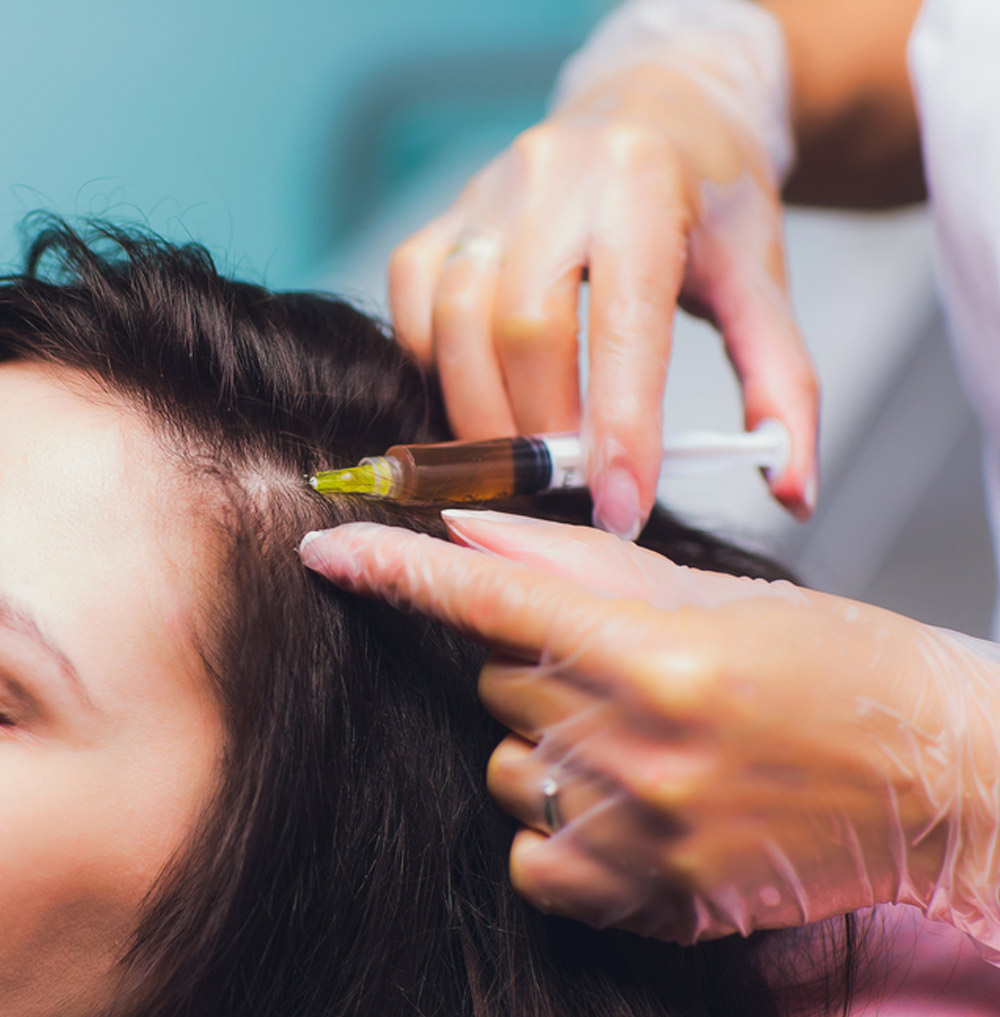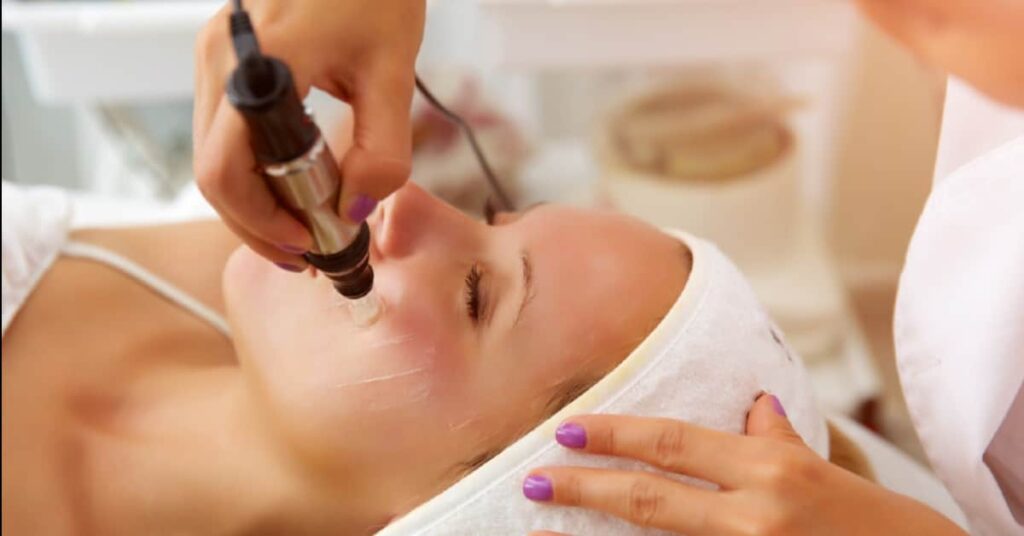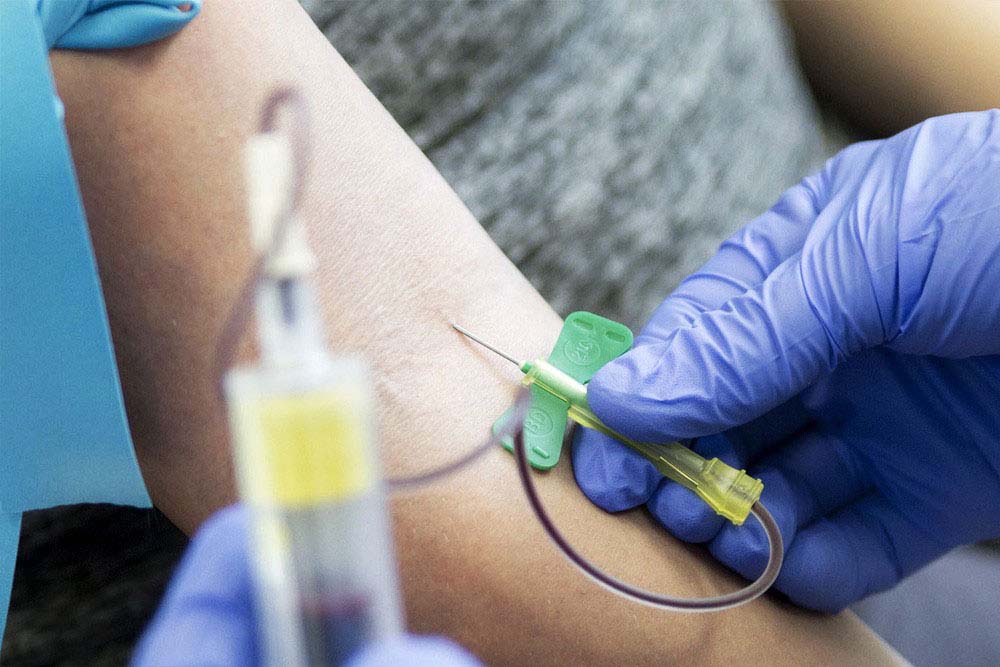 832-509-5099
832-509-5099
 832-509-5099
832-509-5099
If you want to rejuvenate your face, both in shape and texture, but aren’t ready for surgery, we’re happy to recommend the PRP facelift. Noninvasive and proven in clinical studies, this treatment can instantly make you look younger without risky side effects. And when you come to Shine MD Medspa & Liposuction Center in Houston, TX, you have the added benefit of a caring, compassionate staff.
You likely know this as a vampire facelift, a treatment that has garnered as much attention for its aesthetic benefits as its name. In describing this therapy, we’d first like to point out it is nonsurgical, meaning it doesn’t follow the same course as a traditional facelift. This is enormously attractive to patients who do not want the risks or recovery time associated with surgery.
We derive the platelet-rich plasma (PRP) from your own blood and target platelets specifically because they possess potent healing properties. In fact, the benefits of this treatment include:

In addition to PRP, the vampire facelift also incorporates fillers that contain hyaluronic acid (HA). Let’s start at the beginning to provide a more concise explanation. First, we inject the HA-based filler into targeted areas to help lift, contour, and volumize your face. If you’re not familiar with fillers, it’s worth noting they are very popular, almost always well-tolerated, and used in common places of concern like the:
Because these fillers are administered below the skin, they provide immediate results that gradually evolve in the coming days. They enhance your facial shape without altering your appearance and offer subtle, long-lasting effects. And HA, which your body produces naturally, restores hydration so skin integrity is improved even as it looks plumper and softer.
After the dermal filler application, our staff draws a small sample of blood from your arm and places it into a sterilized centrifuge. This allows us to isolate the platelets, which we then apply to your face to stimulate new skin cell growth and collagen production (we’ll talk more about these effects in just a moment).
The technique we use for the PRP application will depend on factors like your age, skin health, and treatment goals. We may, for instance, use microneedling, in which a device is gently maneuvered over your skin to create controlled microchannels. When PRP is applied over these “wounds,” it sinks below the skin’s surface so regenerative agents are easily absorbed.
We may alternatively inject the PRP into specific sites using a very fine needle. In either case, you’ll know what to expect on the day of treatment. And, if necessary, we will apply a topical numbing agent to your face to minimize the potential for any discomfort.

You might be wondering why, with blood being as healthy as it is, we don’t simply use it and skip the platelet extraction process altogether. The answer is this: the concentration of platelets in PRP is normally five to six times greater than that of blood. Concentrated platelets release growth factors known to regulate a variety of processes, including:
Growth factors are not to be confused with growth hormones. Rather, these natural substances help to repair skin on a routine basis. Trouble arises when aging skin cells produce fewer growth factors, giving way to skin that becomes weaker, laxer, and duller. Ramping up production with a PRP facelift can therefore rejuvenate skin in a way that closely mimics the body’s processes.
An integral component of tissue health is the extracellular matrix (ECM), which we briefly mentioned a moment ago. This is a complex structure that contains cells like fibroblasts and macrophages in addition to proteins like collagen and elastin. It provides support for cell shape, controls and determines the dynamic behaviors of cells, and gives mechanical support to tissues.
The ECM is additionally involved in cell growth, regeneration, and healing. You can think of it as the scaffolding that supports your face, providing it with the shape you see in the mirror. But age-related changes to the ECM lead to skin degradation visible in the form of lines, wrinkles, hyperpigmentation, and volume loss. Releasing growth factors that rebuild the ECM is therefore a great way to improve skin’s health and appearance.

The National Institutes of Health label PRP as a safe and effective therapy for skin rejuvenation, based on its ability to increase dermal collagen levels. Even one application can yield visible results, as demonstrated in clinical studies. One study revealed that 28 days after PRP application, collagen showed to be greater in skin biopsies; repeated treatments further increased collagen synthesis.
As we’ve already discussed, PRP contains growth factors that stimulate the activation of fibroblasts. These, in turn, secrete collagen, which strengthens the ECM. The end result is plumper, more lifted skin that serves to restore facial shape and smooth away wrinkles. These effects have also been confirmed by clinical studies, proving aged and photodamaged skin can be remodeled with a PRP facelift.
Over 30 growth factors have been identified in platelets, including platelet-derived growth factor (PDGF). Its foremost goal is to promote blood vessel growth, a process that involves cells in existing blood vessels. Another identifiable protein is vascular endothelial growth factor (VEGF). The most important task of VEGF is to create new blood vessels.
Blood vessel creation and growth allows for stronger circulation to the skin. The benefits of this are two-fold: the skin receives the oxygen and nutrients it needs while waste products like free radicals are swept away.

These two treatments are easily confused because they’re similar in nature. But the PRP facelift combines an injectable dermal filler with PRP for broader results. And, because the filler immediately smooths and plumps, the results of this treatment are immediately visible. The full effects continue to develop over a period of one to three months, as collagen synthesis increases, and can last between one and two years.
A vampire facial, on the other hand, does not include the benefits of a dermal filler. It always relies on microneedling, whereas a facelift may omit this in favor of PRP injections, and is best for patients with good baseline skin that is not compromised by severe damage or aging. For treatment purposes, it can improve skin texture, reduce fine lines, and erase acne scars. The facelift is better for patients with wrinkles and general volume loss.
Although similar in nature, these two therapies are not the same. The former is entirely unique in that it uses your own blood to promote skin healing and rejuvenation. The latter is slightly more versatile in that biocompatible dermal fillers are paired with injectable neuromodulators like Dysport and Botox. All injections are delivered to targeted areas to address wrinkles, folds, and fine lines.

Compared to other cosmetic treatments, the PRP facial is relatively straightforward. We may suggest you prepare by stopping blood-thinning medications and supplements, including multivitamins, garlic, and cod liver oil. You’ll also be advised to avoid chemical peels, laser treatments, electrolysis, waxing, and threading treatments that can individually irritate the skin. Additional recommendations will likely include:
On the day of your appointment, you should arrive with a clean face free of makeup, lotions, and other topical products. If you normally shave the area to be treated, do so the night before rather than the day of. Immediately after treatment, you must not pick or scratch treated skin. Use a moisturizer, avoid vigorous exercise, and stay out of the sun and heat for at least 24 hours. Also, use clean linens and towels and disinfect your cell phone with alcohol wipes.
Continue to avoid anti-inflammatory medications for a week. Use tepid water and a gentle cleanser to wash your face for the first 72 hours, and still avoid warm environments like tanning booths, saunas, and hot tubs. You can resume using your regular skincare products and makeup approximately four to five days after treatment. We may recommend three total treatments, each spaced four weeks apart, for maximum benefits.
Some patients wonder if the vampire facelift differs from Botox, and the answer is yes. Botox smooths away wrinkles by temporarily paralyzing targeted facial muscles. Conversely, a vampire facelift offers multiple effects, as previously discussed, without impacting any muscles. It can help:
Those who take prescription blood thinners will need special consideration. Treatment is not ideal for women who are pregnant or breastfeeding, as well as those with pacemakers or a history of severe heart disorders. All other patients are advised to come into our office for a consultation, during which we will assess the condition of your skin and overall health.
No, and this is one of the key factors that separates this “facelift” from that which requires surgery. Keep in mind a vampire facelift is non-surgical and non-invasive. We’ll make a series of injections to the face, but these do not leave scars or require wound dressings.
This therapy does not require that you rest or take time off from work, although you may certainly do either as a way of rejuvenating your entire body. The therapy takes around 90 minutes, and once complete, you can resume most of your routine activities. If we feel you need additional precautions, we will provide them after your treatment.

Brighter, healthier, and firmer skin are yours to enjoy with a PRP facelift. It is inherently safe because it uses your own blood, and results last up to two years. To schedule your consultation today, call Shine MD Medspa & Liposuction Center in Houston, TX., we give you solutions. So, please book an appointment with us today and get a one-on-one consultation with the best board-certified skin specialists in town. You can call us at 832.509.5099 to schedule an appointment also. Read ahead, and we’ll walk you through everything you need to know—one step at a time.
[trustindex data-widget-id=”4988679204ec7443c4539b3048″]